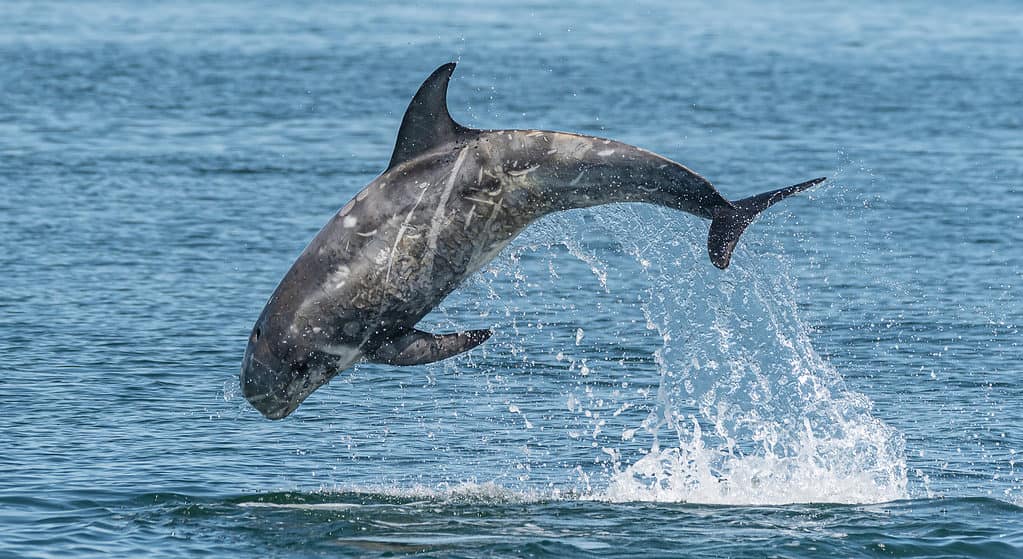The brains of three species of dolphins stranded along the coast of Scotland have shown the classic markers of human Alzheimer’s disease — hinting that dolphins too may be plagued by the disease.
The new study looked at what appears to be dementia in odontocetes (toothed whales). The research, a collaboration between researchers from three Scottish universities, studied the brains of 22 odontocetes, finding strong signs of the disease — but researchers aren’t entirely sure how it manifests in dolphins.

Alzheimer’s is the most common cause of dementia. It affects memory, thinking, and behavior and it’s serious enough to interfere with daily life. The main risk factor is increasing age, and most people with Alzheimer’s are 65 or older. It’s a progressive disease with no cure but one treatment, a therapy that removes one of the hallmarks from the brain. Until now, this was thought to be a human-only disease, but this may not be the case.
Dolphins, whales, and porpoises are regularly stranded around the coasts of the UK. They are found in groups in shallow waters and sometimes on beaches. While some can be moved to deeper waters by experts, others are less lucky. The underlying causes of the stranding events are not always clear, and research is still ongoing.
“We were fascinated to see brain changes in aged dolphins similar to those in human ageing and Alzheimer’s disease. Whether these pathological changes contribute to these animals stranding is an interesting and important question for future work,” Professor Tara Spires-Jones from the University of Edinburgh said in a statement.
Alzheimer and dolphins
The study included five different species: Risso’s dolphins, long-finned pilot whales, white-beaked dolphins, harbour porpoises and bottlenose dolphins. Of the 22 studied animals, 18 were aged. The researchers found signs of Alzheimer’s disease in one white-beaked dolphin, one bottlenose dolphin, and one long-finned pilot whale.
Essentially, the researchers looked for the presence of the brain pathology that are part of the classic markets of Alzheimer’s diseases – the formation of amyloid-beta plaques, the accumulation of phospho-tau and gliosis (a change in cell numbers due to central nervous system damage). The brains of all the animals had amyloid-beta plaques.
The three animals had not only plaques, but a number of other dementia-related pathologies in their brains, strongly suggesting that odontocete species can develop Alzheimer-like pathology. However, the study doesn’t confirm whether the animals would have suffered the same cognitive deficits as humans.
“While it is tempting at this stage to speculate that the presence of these brain lesions in odontocetes indicates that they may also suffer from the cognitive deficits associated with human Alzheimer’s disease, more research must be done to better understand what is happening to these animals,” lead author Mark Dagleish said in a statement.
The researchers don’t know why this brain degeneration could be happening in odontocetes, but it could explain why some groups of whales, dolphins, and porpoises run aground in shallow water. Mass strandings have been previously linked to increasing anthropogenic noise in the oceans, but this study offers another possible explanation.
The study was published in the European Journal of Neuroscience.


